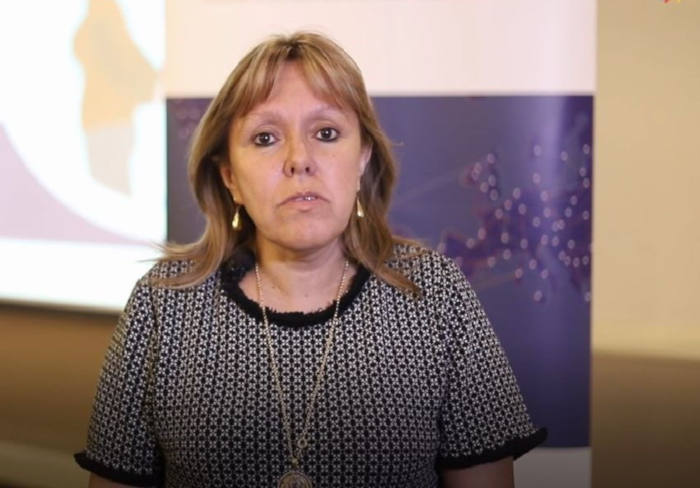-
22 August 2019
Category : Opinion
Women and criminal gangs in Central America
Sandra Zayas, prosecutor of Guatemala and EL PAcCTO collaborator talks about developments in the role of female gang members in Central America
 Sandra Zayas, prosecutor of Guatemala and EL PAcCTO collaborator talks about developments in the role of female gang members in Central America
Sandra Zayas, prosecutor of Guatemala and EL PAcCTO collaborator talks about developments in the role of female gang members in Central AmericaPrevention: a priority
Prevention. This is the area we must focus on in Central American countries because, mathematically, three of the six countries in the region have had a problem with gangs for many years and the situation is emerging in the other three, meaning they will be able to achieve very different results if they work on social prevention and crime.
When you look at the active participation of female gang members, it has changed a lot: from women being the victims of coercion to actually joining these criminal groups. In some countries in the region, they have even become responsible for areas such as logistics and finance.
We must not forget to differentiate between gangs in Guatemala, El Salvador and Honduras, some very powerful such as Mara SalvaTrucha and Barrio 18, and mafia-related gangs in Mexico, Costa Rica and Panama, some emerging and others with very specific purposes.
Gangs in Guatemala, El Salvador and Honduras have more female gang members and several studies on this topic have found that Guatemala is the Central American country with the highest rate of gender inequality, classified as “high”, El Salvador and Honduras as “medium”, and Costa Rica and Panama as “low.” This means fewer job opportunities, less parity, a more serious social gender problem. This gender inequality in our countries coincides with the facts presented at the Workshop on Female Gang members held this spring in San Salvador and organised by EL PAcCTO, a project funded by the European Union and managed by FIIAPP and Expertise France, with support from IILA and the Camões Institute.
It is necessary to distinguish between female participation in gangs as perpetrators, accomplices or to cover up crimes by establishing different penalties for each case. We would also highlight that, in matters of drug trafficking, extortion and money laundering, female gang members take part in activities necessary to commit one or more crimes.
In addition, drug trafficking crimes have led to extortion and murder (“hitmen”) in many of our countries, where female gang members are heavily involved. In Guatemala, there have already been three cases of female gang members who have set off grenades on public transport buses. Therefore, the participation of female gang members in criminal organisations is a fact.
When it comes to the police, prosecutors and judges, there is no evidence that they distinguish between women and female gang members, with the exception of El Salvador and Costa Rica, where they have innovative internal protocols for treating female members of organised crime.
Female gang members in prisons
The United Nations Rules for the Treatment of Women Prisoners and the Non-custodial measures for Women Offenders (the Bangkok Rules) recommend reducing imprisonment sentences for women through corrective measures without custody, taking into account maternity, the separation of mothers from minor children or even mothers who are being held with their children in prison centres. Once again, Costa Rica has managed to reduce the number of women prisoners, taking these criteria into account and using alternative measures to prison in all cases of women who are deprived of liberty. The other countries of the Isthmus only separate the women belonging to different gangs in different prisons in case of conflict between rival gangs. Then there is the matter of the non-existence of positive social reintegration for both women and men in most countries. It is more difficult to reintegrate female gang members into society, especially with an “aggravating factor” when gang women are protected witnesses or effective collaborators, betraying their “family”, their “gang”.
There is little money allocated to invest in this type of problems, total or little political will to create positive regulations, and shared indicators and statistics throughout the legal systems. Specialised means of investigation and above all, a desire for change are also required.
We know that we need intelligence offices, inter-institutional protocols, committed administrators of justice with sufficient tools to act effectively, inter-institutional and international cooperation, data registers and specific indicators for the problems to be solved, because all of this needs to be measurable.
I conclude therefore with the 5Ws: What do we need to do? Work on this problem before it spreads to other countries and becomes as serious as it already is in some regions. How? By working together with defined government policies, with intelligence, registers and measurements. Why? For a better future for our countries. Who? All the inhabitants who love their country. Where? Around the world and when? Right now.
The views and opinions expressed in this blog are the sole responsibility of the person who write them.






